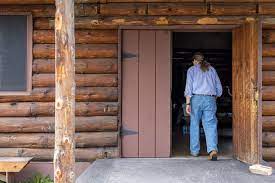
The Onondaga Nation has protested for centuries that illegal land grabs shrank its territory from what was once thousands of square miles in upstate New York to a relatively paltry patch of land south of Syracuse.
It took its case to President George Washington, to Congress and, more recently, to a U.S. court.
All failed.
So now the nation is presenting its case to an international panel. The Inter-American Commission on Human Rights recently allowed the Onondagas to pursue claims their land was taken unjustly by New York state, providing a unique venue for a land rights case against the United States by a Native American nation.
The U.S. government is not expected to abide by any opinion by the commission, which is part of the Organization of American States, a pro-democracy grouping of Western Hemisphere nations.
“We had to adapt to the coming of our white brother to our lands,” said Sid Hill, the Tadodaho, or chief, of the Onondaga Nation. “And we just feel that with the talk about justice and equality and all these issues, then why isn’t it there for us?”
Once the Onondaga Nation’s territory stretched nearly 4,000 square miles (10,000 square kilometers) in what is now New York.
Today, the federally recognized territory consists of 7,500 gently rolling acres (3,000 hectares) south of Syracuse. About 2,000 people live there, many in single-family homes on wooded lots. A tax-free smoke shop sits just off the interstate. A wooden longhouse used for meetings sits deeper in the territory, testimony to the residents’ adherence to traditional ways.
Many feel crowded on their reduced land. They can’t even fish the territory’s creek because decades of salt mining upstream muddied the waters.
“We have freedom, but it’s on a pinhead,” said Kent Lyons, who has lived on the territory since 1970.
The Onondaga’s case centers on a roughly 40-mile-wide (65-kilometer-wide) strip of land running down the center of upstate New York from Canada to Pennsylvania. They claim ancestral land was appropriated over decades by New York, starting in 1788, through deceitful maneuvers that violated treaties and federal law.
The 1788 sale of some 3,125 square miles (8,100 square kilometers) was agreed to by “wrong-headed people” who were unauthorized Onondaga negotiators, according to a letter to George Washington from the Onondagas and fellow members of the Haudenosaunee, or Iroquois, Confederacy.







